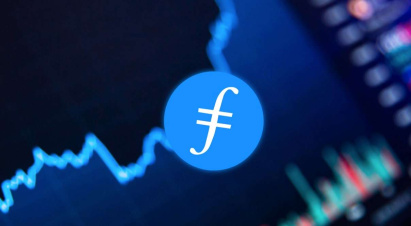Filecoin (FIL) Staking Guide

Filecoin staking is a process that has gained notable traction within the ever-evolving digital landscape of cryptocurrencies.
This guide aims to break down the complex mechanics of this process into an easily digestible format, shedding light on the essential aspects of staking in the Filecoin network, various platforms to facilitate Filecoin staking, and the steps to engage in this activity effectively.
Filecoin, an open-source, decentralized storage system, offers an innovative solution to real-world data storage problems. It utilizes a blockchain-based marketplace where users can sell unused storage or buy storage as needed, fostering an efficient ecosystem for data preservation.
In the broader cryptocurrency space, staking refers to the practice of actively participating in transaction validation on a proof-of-stake (PoS) blockchain. On such a network, individuals hold cryptocurrencies in a wallet to support the network's operations, including transaction verification and network security. In return for their engagement, participants receive staking rewards. In Filecoin's context, staking plays a role in ensuring the integrity and reliability of the data stored across the network.
Platforms for Filecoin Staking
Several platforms support Filecoin staking, each offering unique features and varying degrees of user control and flexibility. The principal ones include the Filecoin mainnet itself and numerous exchanges that support Filecoin, such as Binance, Kraken, and Huobi. Choosing the platform that aligns best with your investment strategy and risk tolerance is an essential step in the staking journey.
Staking Filecoin: Step-by-step Guide
The process of staking Filecoin differs based on the platform of choice. Here, we'll provide a step-by-step guide for staking on both the Filecoin mainnet and one of the most popular exchange platforms, Binance.
Staking Filecoin on the Mainnet
1. Setting Up a Wallet: The first step is to set up a Filecoin wallet. Several wallet options are available, including Lotus, Forest, and Glif. It's crucial to store the wallet's private key securely.
2. Acquiring Filecoin: After setting up the wallet, the next step is to acquire Filecoin (FIL), which can be purchased on various cryptocurrency exchanges.
3. Engaging in Staking: With FIL in your wallet, you can become a storage miner or a retrieval miner. As a storage miner, you provide storage space to the network and stake FIL as collateral. As a retrieval miner, you earn rewards for delivering files to clients successfully.

Staking Filecoin in Binance
1. Creating an Account: The first step is to create an account on the Binance platform.
2. Depositing Funds: Next, deposit funds into your Binance account. You can deposit cryptocurrencies directly or purchase them using fiat currency.
3. Staking: Navigate to the 'Staking' section on the platform, select Filecoin, and choose the amount you wish to stake. The platform will display the expected returns based on the staking duration and amount.

Considerations and Risks in Filecoin Staking
While Filecoin staking offers potential rewards, it comes with its share of risks and requirements. Staking necessitates the locking up of funds for a particular period, during which the staked tokens cannot be used or sold. Furthermore, the rewards are not fixed and can vary based on network conditions. As a storage miner in the Filecoin network, you also need to ensure a stable internet connection and sufficient storage space.
Selecting a Staking Platform
Choosing a platform for Filecoin staking is a decision that should be based on careful consideration. Each platform offers unique advantages and potential drawbacks. For instance, the Filecoin mainnet provides the most direct and transparent way to participate in the network. However, it also involves a higher degree of technical understanding and responsibility.
On the other hand, using an exchange platform like Binance can be more user-friendly and less technically demanding. However, it comes with the risk of platform security and potential limitations on control over your staked Filecoin. It's always advisable to perform thorough research on your chosen platform, its security measures, staking terms, and user reviews before committing your funds.
Preparing for Filecoin Staking
Before you stake Filecoin, there are several preparatory steps to consider. First, it's essential to have a secure and reliable wallet to store your FIL. Wallet security should never be overlooked, as the loss of a wallet's private key can result in the irreversible loss of your tokens.
Next, acquiring FIL is a vital step in your staking journey. There are multiple cryptocurrency exchanges where you can purchase FIL, but it's important to choose a reputable exchange with high liquidity and robust security measures.
Finally, understanding the staking process and the role you wish to play in the Filecoin network is crucial. Do you want to be a storage miner, contributing storage space to the network, or a retrieval miner, delivering files to clients? Each role comes with its own set of responsibilities and rewards.
Optimizing Your Filecoin Staking
Filecoin staking is not just a one-time process but an ongoing activity that requires monitoring and occasional adjustments. Keeping a close eye on network conditions, including changes in staking rewards, can help optimize your earnings.
Furthermore, always be on the lookout for updates from the Filecoin network or your chosen staking platform. These updates may include changes in staking terms, new features, or security upgrades. Staying informed allows you to make the most of your staking experience.
Conclusion
Filecoin staking is an exciting venture within the evolving world of decentralized storage and cryptocurrencies. By offering your resources to the network, you not only contribute to the robustness and reliability of the Filecoin ecosystem but also stand a chance to earn rewards.
This guide has provided a comprehensive look into the process of Filecoin staking, including platform selection, staking steps, and important considerations. However, remember that the world of cryptocurrencies is dynamic and ever-changing. As such, continuous learning and staying updated with the latest developments is the key to a successful staking journey. As always, balance your enthusiasm with cautious optimism and embark on your Filecoin staking adventure armed with knowledge and preparedness.








 Scroll to top
Scroll to top